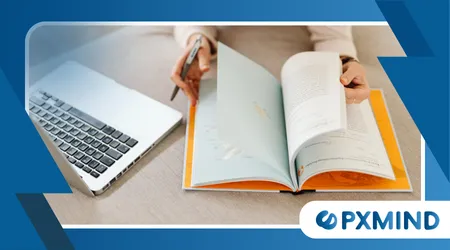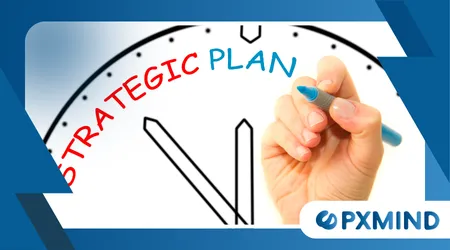Come usare le pause in modo strategico durante l'apprendimento

The secret to Use Breaks Strategically When Learning is not just stopping but stopping smartly. Many believe relentless study is the key to mastery.
Annunci
However, true efficiency lies in rhythm. This piece explores the intelligent integration of pauses into your learning routine.
We will demonstrate how these strategic pauses significantly amplify retention and focus. A well-timed break is a powerful cognitive tool, not a sign of weakness.
Why Are Regular Breaks Essential for Cognitive Performance?
Our brains, powerful as they are, operate best in cycles. Sustained, intense focus leads rapidly to cognitive fatigue.
This depletion impairs the critical functions of memory consolidation.
Ignoring this biological reality hinders deep understanding and recall. Short, intentional interruptions are crucial for restoring mental resources.
What Is the Science Behind the Power of Pausing?
The brain actively processes and consolidates information during downtime. Neuroscientists call this phenomenon memory consolidation.
It shifts newly acquired data from short-term to long-term storage.
Uno studio pubblicato sulla rivista Neurone highlights the role of “sleep-like activity” during wakeful rest. This demonstrates the necessity of mental quietude for effective learning.
What Are the Best Practical Strategies to Use Breaks Strategically When Learning?
Employing effective break techniques transforms study sessions into highly productive blocks. The key is in the timing and the activity during the pause.
Structured rest periods prevent burnout and maintain a high-quality focus. Without structure, breaks easily turn into procrastination.
Per saperne di più: Sessioni di studio mattutine vs. serali
The Pomodoro Technique is a globally recognized time management system. It advocates for 25 minutes of focused work followed by a 5-minute break.
After four cycles, one takes a longer break, typically 15 to 30 minutes. This structured approach optimizes focus-stamina and minimizes mental drag.
It teaches your brain to work in short, highly concentrated bursts.

What Kind of Activities Should You Do During Your Break?
Avoid cognitively demanding activities like checking social media or complex problem-solving. An ideal break involves movement or relaxation. S
tand up and stretch, walk around the room, or simply look away from your screen.
Guarda quanto è interessante: Il ruolo della curiosità nell'apprendimento accelerato
Light physical activity improves blood flow to the brain, enhancing oxygen supply. This simple action naturally aids in mental rejuvenation.
The Focused Student’s Micro-Break
Imagine Sarah is studying complex organic chemistry for 50 minutes. Instead of scrolling on her phone during her 10-minute break, she steps outside.
She walks briskly for the first 5 minutes, inhaling deeply. She spends the remaining 5 minutes drinking water and looking out the window.
She returns to her desk feeling refreshed, not drained by endless digital stimulation. This intentional rest resets her concentration.
How Does Spacing and Interleaving Maximize Retention?
A critical part to Use Breaks Strategically When Learning involves macro-level planning.
Spacing involves spreading out learning sessions over a longer duration. Interleaving means mixing different but related subjects during a single session.
This mix of concepts prevents monotony and forces the brain to actively retrieve information.
| Strategia | Descrizione | Beneficio cognitivo |
| Ripetizione distanziata | Reviewing material at increasing intervals over time. | Strengthens long-term memory traces. |
| Interlacciamento | Mixing different subjects/topics during study. | Improves discrimination and transfer of knowledge. |
| Richiamo attivo | Testing oneself without looking at notes. | Deepens encoding and retrieval strength. |
What Is the Impact of Short Breaks on Motivation and Burnout?
A consistent schedule that integrates rest prevents the notorious “wall” of burnout. Knowing a break is imminent makes the focused work period feel manageable.
++ La psicologia della procrastinazione e come sconfiggerla
This predictability enhances intrinsic motivation and reduces feelings of overwhelm. It’s impossible to run a marathon at a sprint pace; why should learning be any different?
How Can You Customize Your Break Schedule for Optimal Results?
The 25/5 Pomodoro ratio is a starting point, not an absolute rule. Pay close attention to your individual concentration curve.
A highly focused individual might manage a 50/10 split effectively.
Conversely, someone struggling with focus might benefit from a 15/5 structure. Experiment to find your personal cognitive rhythm.

The Working Professional’s Cognitive Shift
Mark is learning a new programming language after work, a difficult task. After 40 minutes of coding practice, he takes a short break.
He uses this time to do a simple, unrelated household chore, like folding laundry.
The manual, low-demand task engages a different part of his brain. When he returns, his mind is clear of the previous coding challenge.
What Real-World Data Supports the Break Strategy?
In a meta-analysis of studies on deliberate practice, researchers consistently noted a key finding.
Elite performers often structure their practice into shorter, intensely focused blocks.
For instance, violinists achieving expert status practiced in distinct, manageable sessions. They were found to take more breaks than less proficient musicians.
A highly relevant statistic: one large-scale study indicated that regular, short breaks could boost task performance and overall concentration by up to 16%.
This quantifiable data affirms the necessity of strategic rest.
How Is Learning Without Pausing Like a Swan on Water?
Learning without strategic breaks is like a swan gliding effortlessly across a lake. From a distance, it appears calm and serene, moving without effort.
But beneath the surface, the swan’s legs are paddling furiously and inefficiently. Eventually, that frantic energy will lead to exhaustion.
A strategic break is the moment the swan briefly stops paddling, allowing the momentum to carry it forward while its legs rest for the next powerful stroke.
That necessary rest ensures sustained, elegant progress.
Why is it crucial to Use Breaks Strategically When Learning today?
In our hyper-connected, high-demand world, the pressure to always be on is immense. But maximum productivity is achieved through intelligent recovery.
Mastering the art to Use Breaks Strategically When Learning is a high-level skill.
It’s the difference between merely studying for hours and actually absorbing knowledge effectively.
Do you truly want to spend time, or invest it? Learning how to Use Breaks Strategically When Learning is the ultimate investment.
Domande frequenti
Should I completely stop thinking about the material during a break?
Yes, for micro-breaks (5-10 minutes), it is highly beneficial to engage in a non-cognitive activity. This allows the brain to disengage and consolidate information passively.
Does sleep count as a strategic break for learning?
Absolutely. Sleep is the most crucial time for memory consolidation and pruning unnecessary information. Aim for 7-9 hours of quality sleep nightly for optimal learning.
Can a “break” involve switching to an easier related task?
That would be considered “interleaving” or “switching tasks,” not a true rest break. A true break involves removing the cognitive load entirely for a short period.
How do I overcome the urge to check my phone during a break?
Physically place your phone in another room or far from your desk. Replace the digital distraction with a pre-planned, non-digital activity like a stretch or a quick walk.
How long should my longer breaks be after a few cycles of work?
The typical longer break ranges from 15 to 30 minutes, depending on the intensity of your focused work. Use this time for a small meal or light exercise.
